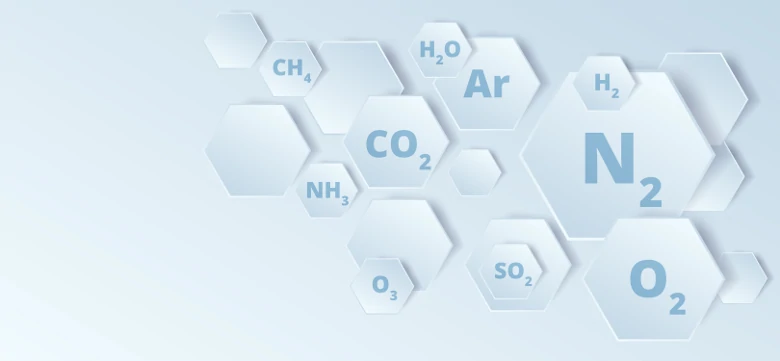Qualitative Analysis
In this article, we will be learning about qualitative analysis and these are the following learning objectives:
- Describe the tests to identify aqueous cations.
- Describe the tests to identify anions.
This article is written keeping in mind the requirements of the Upper Secondary Chemistry syllabus in Singapore.
Qualitative Analysis
It is the process of identifying cations and anions present in an unknown aqueous solution.
- It is an integral part of the practical exam.
- It is performed by adding certain reagents to a solution containing the suspected ion and observing the changes that occur.
The changes can be in the form of either:
- colour of the precipitate produced, if any, when the reagent is added;
- solubility of the precipitate when excess reagent is added; or
- evolution of a gas upon addition of the reagent.
Identifying Cations
Cations are identified based on their reactions with either of the two reagents, sodium hydroxide solution, NaOH (aq), and aqueous ammonia, NH3 (aq).
The colour of the precipitates formed and their solubility in excess of the reagent, both serve as a useful guide for the identification of cations in aqueous solutions. The precipitate formed when either sodium hydroxide solution or aqueous ammonia is added to the solutions containing the different cations is the hydroxide of the metal ion.
Steps for testing aqueous cations:
- Add a few drops of sodium hydroxide solution or aqueous ammonia to the solution containing the cation. Observe the colour of any precipitate formed.
- Add excess sodium hydroxide solution or aqueous ammonia and observe the solubility of the precipitate.
Let us take a look at some of the aqueous cations that form white precipitate when sodium hydroxide solution or aqueous ammonia is added.
Test using sodium hydroxide solution
|
Cation |
On adding a few drops of NaOH (aq) |
On adding excess |
|
Zinc ion, Zn2+ |
White precipitate of Zn(OH)2 Zn2+ (aq) + 2OH– (aq) ——► Zn(OH)2 (s) |
White precipitate dissolves to form a colourless solution |
|
Aluminium ion, Al3+ |
White precipitate of Al(OH)3 Al3+ (aq) + 3OH– (aq) ——► Al(OH)3(s) |
White precipitate dissolves to form a colourless solution |
|
Lead(II) ion, Pb2+ |
White precipitate of Pb(OH)2 Pb2+ (aq) + 2OH– (aq) ——► Pb(OH)2 (s) |
White precipitate dissolves to form a colourless solution |
|
Calcium ion, Ca2+ |
White precipitate of Ca(OH)2 Ca2+ (aq) + 2OH– (aq) ——► a(OH)2(s) |
White precipitate remains |
You can observe that the results for the test of Zn2+, Al3+ and Pb2+ are the same, hence using sodium hydroxide solution alone cannot distinguish Zn2+ from Al3+ and Pb2+.
We can further perform a test of these cations using aqueous ammonia.
Test using aqueous ammonia
|
Cation |
On adding a few drops of NH3 (aq) |
On adding excess |
|
Zinc ion, Zn2+ |
White precipitate of Zn(OH)2 Zn2+ (aq) + 2OH– (aq) \(\to\) Zn(OH)2(s) |
White precipitate dissolves to form a colourless solution |
|
Aluminium ion, Al3+ |
White precipitate of Al(OH)3 Al3+(aq) + 3OH– (aq) ——► Al(OH)3 (s) |
White precipitate remains |
|
Lead(II) ion, Pb2+ |
White precipitate of Pb(OH)2 Pb2+ (aq) + 2OH– (aq) ——► Pb(OH)2(s) |
White precipitate remains |
|
Calcium ion, Ca2+ |
No precipitate |
No precipitate |
Notice that only Zn2+ ions form a white precipitate that dissolves in excess aqueous ammonia, but Al3+ and Pb2+ ions do not.
Let us move on to look at some of the aqueous cations that form coloured precipitate when sodium hydroxide solution or aqueous ammonia is added. These colours are unique, hence allowing us to identify the cation easily.
Test using sodium hydroxide solution
|
Cation |
On adding a few drops of NaOH (aq) |
On adding excess |
|
Copper(II) ion, Cu2+ |
Blue precipitate of Cu(OH)2 Cu2+ (aq) + 2OH– (aq) ——► Cu(OH)2 (s) |
Blue precipitate remains |
|
Iron(II) ion, Fe2+ |
Green precipitate of Fe(OH)2 Fe2+ (aq) + 2OH– (aq) ——► Fe(OH)2 (s) |
Green precipitate remains |
|
Iron(III) ion, Fe3+ |
Reddish-brown precipitate of Fe(OH)3 Fe3+ (aq) + 2OH– (aq) ——► Fe(OH)3 (s) |
Reddish-brown precipitate remains |
Test using aqueous ammonia
|
Cation |
On adding a few drops of NH3(aq) |
On adding excess |
|
Copper(II) ion, Cu2+ |
Blue precipitate of Cu(OH)2 Cu2+ (aq) + 2OH– (aq) ——► Cu(OH)2 (s) |
Blue precipitate dissolves to form a dark blue solution |
|
Iron(II) ion, Fe2+ |
Green precipitate of Fe(OH)2 Fe2+ (aq) + 2OH– (aq) ——► Fe(OH)2 (s) |
Green precipitate remains |
|
Iron(III) ion, Fe3+ |
Reddish-brown precipitate of Fe(OH)3 Fe3+ (aq) + 2OH– (aq) ——► Fe(OH)3 (s) |
Reddish-brown precipitate remains |
Notice the difference in the results when sodium hydroxide solution or aqueous ammonia is added to a solution containing Cu2+ ions.
Finally, there is one aqueous cation that does not produce any precipitate when sodium hydroxide solution is added.
Test using sodium hydroxide solution
|
Cation |
On adding a few drops of NaOH (aq) |
On adding excess |
|
Ammonium ion, NH4+ |
No precipitate On heating, ammonia gas is given off. Ammonia gas turns moist red litmus paper blue. |
—— |
Test Your Skill
Question 1:
Which ion gives a coloured precipitate with excess aqueous ammonia?
- Ca2+
- Cu2+
- Fe2+
- Na+
Solution:
(C) Fe2+
Explanation:
Fe2+ ions form a green precipitate which is insoluble in excess aqueous ammonia.
Question 2:
Which ion does not produce a precipitate with excess aqueous ammonia?
- Al3+
- Fe2+
- Pb2+
- Zn2+
Solution:
(D) Zn2+
Explanation:
Zn2+ ions form a white precipitate which dissolves in excess aqueous ammonia to form a colourless solution.
Question 3:
A metallic ion in an aqueous solution has the following characteristics:
- forms a white precipitate with NaOH (aq) and is soluble in excess; and
- forms a white precipitate with NH3 (aq) and is insoluble in excess.
Which of the following ions best fits these characteristics?
- Ca2+
- Na+
- Pb2+
- Zn2+
Solution:
(C) Pb2+
Explanation:
Pb2+ ions form white precipitate with both sodium hydroxide solution and aqueous ammonia. This white precipitate is lead(II) hydroxide, Pb(OH)2.
The white precipitate is soluble in excess sodium hydroxide, but insoluble in excess aqueous ammonia.
Question 4:
Which of the following results is most likely to be seen when an aqueous ammonia is added in excess to a solution containing copper(II) nitrate?
- a clear dark blue solution
- a cloudy dark blue precipitate
- a green precipitate
- a light blue precipitate
Solution:
(A) a clear dark blue solution
Explanation:
Cu2+ ions in copper(II) nitrate solution form a blue precipitate which dissolves in excess aqueous ammonia to form a dark blue solution.
Identifying Anions
Anions are identified based on their reaction with specific reagents.
These are the anions that we will be identifying:
- nitrate ion, NO3–
- carbonate ion, CO32–
- chloride ion, Cl–
- sulfate ion, SO42–
- iodide ion, I–
|
Anion |
Test |
Observations |
|
Nitrate ion, NO3– |
Add sodium hydroxide solution, followed by a piece of aluminium foil. Warm the mixture. Test the gas given off with a piece of moist red litmus paper. |
Effervescence is observed. Gas turns moist red litmus paper blue. Ammonia gas is given off. |
|
Carbonate ion, CO32– |
Add dilute hydrochloric acid. Test the gas given off by bubbling it into limewater. |
Effervescence is observed. White precipitate is formed in limewater. Carbon dioxide gas is given off. |
|
Chloride ion, Cl– |
Add dilute nitric acid, followed by adding silver nitrate solution. |
White precipitate of silver chloride is formed. Ag+ (aq) + Cl– (aq) ——► AgCl (s) |
|
Sulfate ion, SO42– |
Add dilute nitric acid, followed by adding barium nitrate solution. |
White precipitate of barium sulfate is formed. Ba2+ (aq) + SO42– (aq) ——► BaSO4 (s) |
|
Iodide ion, I– |
Add dilute nitric acid, followed by adding silver nitrate solution. |
Yellow precipitate of silver iodide is formed. Ag+ (aq) + I– (aq) ——► AgI (s) |
Note: Notice that the tests for ammonium ion, NH4+, and nitrate ion, NO3–, are very similar. Both involve using sodium hydroxide solution and both tests produce ammonia gas. The only difference is that aluminium foil is added as well, when testing for nitrate ion, but not for ammonium ion.
Why is dilute nitric acid added in the testing of Cl–, SO42– and I– ions?
In all cases, dilute nitric acid is added to remove any interfering ions that can form a precipitate with the added reagent.
For example, any carbonate ions present would react with aqueous silver nitrate or aqueous barium nitrate to form a white precipitate of silver or barium carbonate.
This results in a false positive test that we can avoid by adding dilute nitric acid. The carbonate ions will react with the dilute nitric acid to form salt, carbon dioxide and water.
Question 5:
An aqueous solution X is tested and the results are shown in the table below.
|
reagent added |
colour of precipitate |
|
acidified aqueous silver nitrate |
yellow |
|
Aqueous sodium hydroxide |
green |
Which ions does solution X contain?
- Cu2+ and Cl–
- Cu2+ and I–
- Fe2+ and Cl–
- Fe2+ and I–
Solution:
(D) Fe2+ and I–
Explanation:
Acidified aqueous silver nitrate is used to test for the presence of chloride and iodide ions, which form white and yellow precipitates respectively.
Upon addition of sodium hydroxide solution, a green precipitate indicates the presence of iron(II) ions. The green precipitate is iron(II) hydroxide.
Question 6:
A salt is dissolved in water. The results of two separate tests on the solution are shown in the table below.
|
test |
result |
|
|
1 |
add aqueous ammonia |
a white precipitate which dissolves when excess aqueous ammonia is added |
|
2 |
Add dilute nitric acid then aqueous barium nitrate |
a white precipitate |
What is the salt?
- aluminium chloride
- aluminium sulfate
- zinc chloride
- zinc sulfate
Solution:
(D) zinc sulfate
Explanation:
Aqueous ammonia is added to identify the cation present in the salt solution. The formation of a white precipitate which dissolves in excess aqueous ammonia is indicative of the presence of zinc ions, Zn2+.
Acidified barium nitrate solution is used to identify the sulfate ion present. The formation of the white precipitate is indicative of the presence of sulfate ions. Barium ions react with sulfate ions to form a white precipitate of barium sulfate.
Hence, the salt tested is zinc sulfate.
Conclusion
In this article, we have discussed qualitative analysis as the process of identifying cations and anions present in an unknown aqueous solution. The aqueous cations are identified with the use of either sodium hydroxide solution or aqueous ammonia.
 SG
SG  VN
VN 












